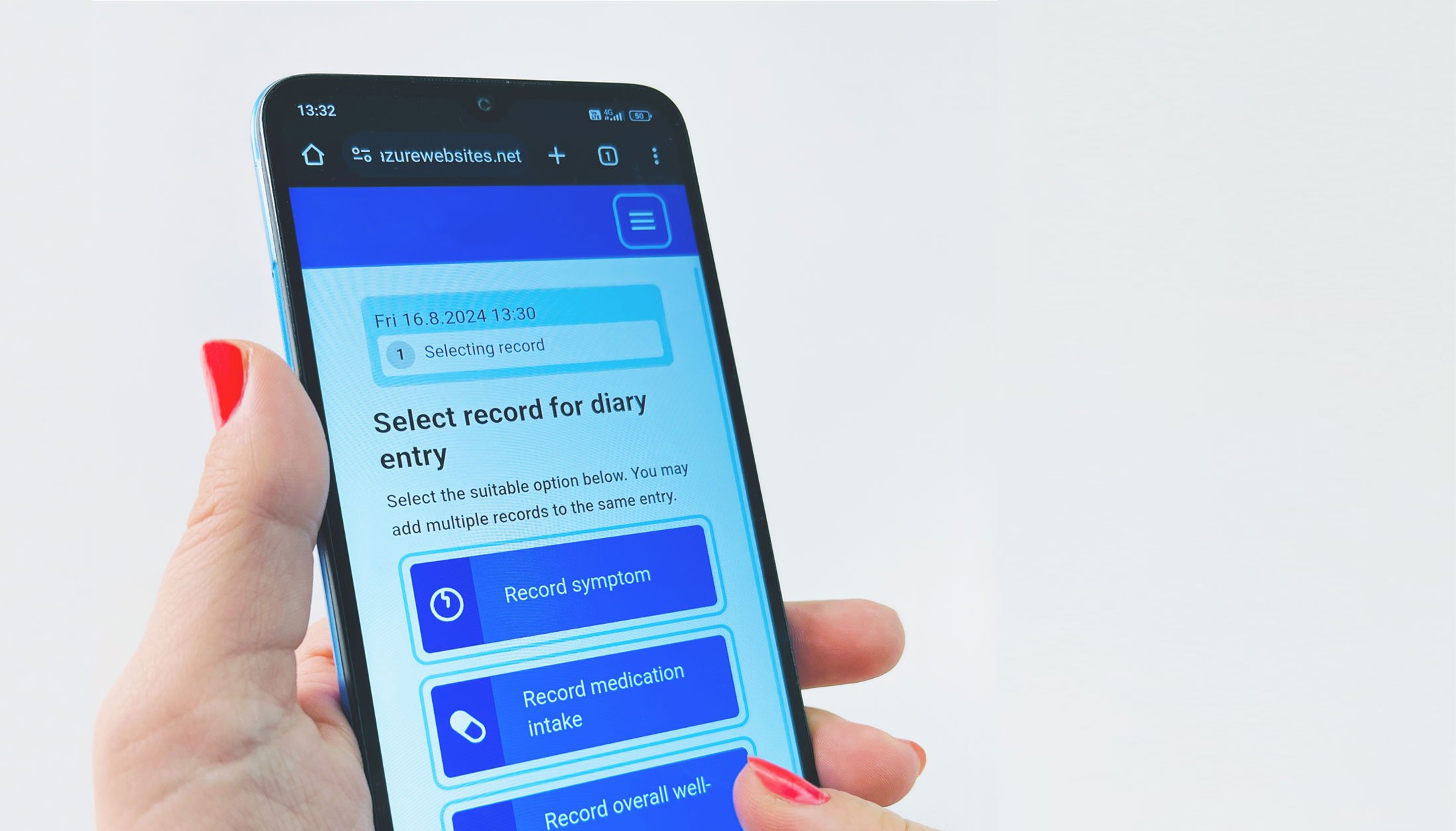New patient diary for Adamant Health measurement and analysis service
An easy-to-use patient diary specifically developed for people with Parkinson's disease.
The new patient diary, particularly developed for the Adamant Health measurement and analysis service, offers an easy and secure way to collect accurate information on the patient's medication intakes, symptoms, and well-being for clinical use.
Easy to use with minimal administrative requirements
The patient diary is easy to take into use – with minimal administrative requirements. The information for accessing the diary is retrieved directly from the Adamant Health Clinic Application and handed to the patient – at the same time when the patient visits the clinic to start the measurement. After the measurement, the information is automatically transferred to the Adamant Health Cloud Service and made available in the symptom report.
Accurate information on the patient's medication intakes, symptoms, and well-being
The patient diary easily captures information on Parkinson’s disease medication intakes, symptoms, and overall well-being provided by the patient for clinical use. The patient chooses from pre-selected options, providing standardized data with the highest possible accuracy.
High level of data privacy and security
The patient diary is a password-protected web application collecting the patient's information on medication intakes, symptoms, and well-being in a non-identifiable format. The patient's information is stored securely in Adamant Health's Cloud Service.
“The diary application is easy to use, with a clear menu and an intuitive user interface.”
The patient diary has been specifically developed for the needs of people with Parkinson's disease to ensure the best possible user experience. Medication intakes, symptoms, and well-being information can be easily and instantly recorded – without installing software or applications. Entries are created by choosing from pre-selected options without the need to type information manually.
After the measurement, the information is automatically added to the symptom report, allowing a comparison of the patient-reported symptoms with the objectively measured symptom data.
For the first time, it is possible to receive a holistic view of a patient’s condition by collecting symptom data accurately measured with surface electromyography (EMG) and 3D accelerometry and comparing it with the patient-reported symptoms.

